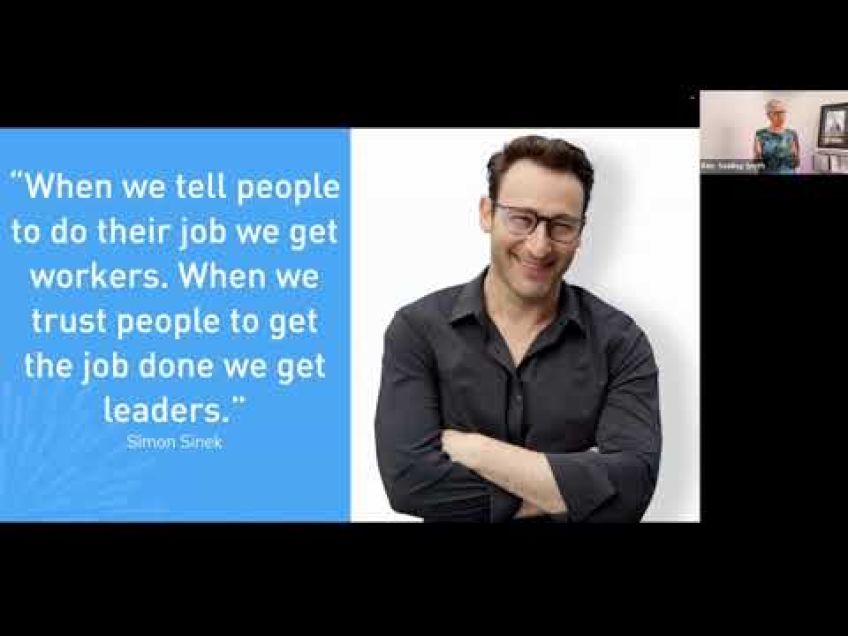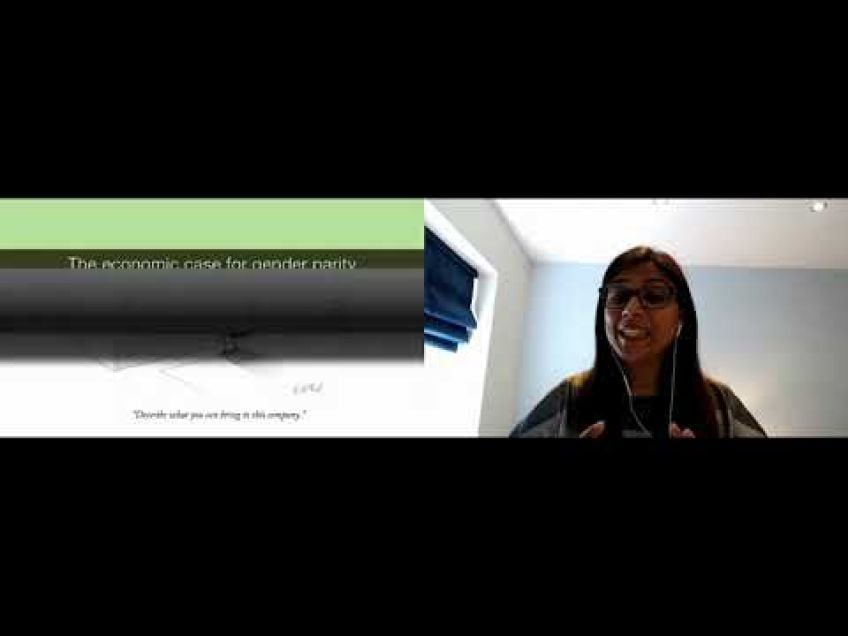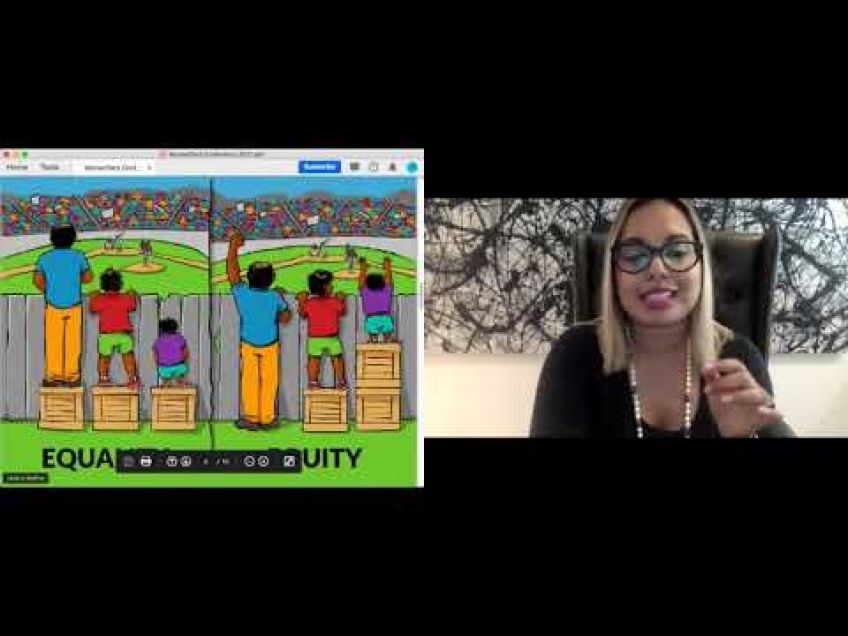Naimeesha Murthy - The Correlation Between Primary Care Benefits and Women in the Workforce
The Correlation between Primary Care Benefits and Women in the Workplace
Today, we explore a crucial topic – the correlation between primary care benefits and women in the workforce. In the wake of hundreds of thousands of women exiting the labor force due to the COVID-19 pandemic, evaluating employee benefit packages is more important than ever. Let's dive into the role of primary care benefits in helping to support women and enable them to remain and thrive in the workforce.
About the Speaker
To start, let's get to know the speaker for today, Naisha, a proud product manager who is originally from India but has spent more than a decade in the New Jersey/New York area. After the birth of her son in 2017, the struggle to balance work and personal life, pushed her to create what is now known as productsbywomen.com. This community has since grown beyond the New York area and now spans over 120 countries.
Working Women's Exodus from the Labor Force
In January 2021, 275,000 women in the U.S. dropped out of the labor force, bringing the total to 2.3 million women exiting the workforce. This drastic reduction reversed three decades worth of progress, taking female workplace participation back to levels last seen in 1988. A leading reason for this mass departure? Absence of adequate primary care benefits.
The pandemic's impact extends beyond job loss; it has resulted in women globally losing approximately $800 Billion in earnings. What's more, women, particularly mothers, have had to shoulder the triple burden of managing their jobs, housework, and childcare. It's no surprise, then, that roughly one in four women contemplate downscaling their careers or leaving the workforce entirely.
The Impact of Care Benefit Packages
The paucity of healthcare or care benefit packages has significantly contributed to the mental health decline among those who continued working during the pandemic. As working caregivers juggle the needs of their children and job expectations, they are left feeling overwhelmed, leading to increased burnouts. Is there a solution though? Let's explore.
Recommendations for Employers
As we strive to support women and caregivers in the workforce, employers need to rethink their strategy. Here are some recommendations:
- Allow Work from Anywhere: This gives parents and caregivers the vital support they need.
- Offer Flex Hours and Train Staff: Along with work flexibility, the onus is on employers to train managers to handle distributed workforces without bias.
- Provide Upskilling Opportunities: This could help bring mothers who exited the workforce due to the pandemic back into the fold.
- Reevaluate Benefit Packages: Could commuter benefits be redirected towards child enrichment classes or mental health services, for example?
The old benefit packages need to be replaced with a new, relevant one that prioritizes mental health, inclusivity, and fairness. Thus, the 'future of work' should be a reflection of these updated priorities.
Driving Change as an Employee
Raising these concerns with employers is the first step that employees can take. Conversations around workloads, mental health, and inadequate benefit packages need to be normalized in workplace culture, now more than ever.
While we are on the brink of change, with many employers already responding positively, the journey towards an ideal workplace is ongoing. In the meantime, let's continue to spread the word and keep the conversation alive.
For further questions and discussion on this topic, feel free to reach out to Naisha (contact info).
Remember, your voice matters, and together we can work towards a fairer and more inclusive workspace for all.
Video Transcription
Hi and welcome everyone. Thanks for joining. Uh where's everyone joining us from? Do you wanna drop it in the chat box? Let's keep it pretty um, conversational. I'm located in uh New Jersey. Awesome, New York, San Francisco, Texas. It's great. And, oh, wow, Portland.And are you all, do you all work? Do you work for Canada? Awesome. I work in product. I work for an agency called Huge. So really excited to be here today. The analyst. Awesome. Cool. Fantastic. Ok. Before we get started, a quick shout out to the organizers, partners and all the speakers, uh This is truly an incredible conference. Thanks for giving me this space and opportunity to speak about this really important topic in conversation, which is the correlation between primary care benefits and women in the workforce, career coach for stem students. Awesome. All right. I want to start by telling you a little bit about me and my story and I'm why I'm here. So I'm Naisha. I'm originally from India. Uh but I've been living in the New York, New Jersey area for a little over a decade now. For those. So for those of you who are in the New York area. Please do reach out to me, I'd love to connect. Um But I wanna give you a little bit more context here uh and take you into my life.
So in late 2017, I had my son who is now three years old. Uh His name is Ari. It's about the same time I was offered a role uh within my past organization to move from product marketing to product management. Um So at that time, I was really excited about it and I decided to grab the opportunity. Um Also, at that time, you know, things were really picking up on the product space. But when I did come back from maternity after just three months, yes, only after three months, I was really finding it hard to balance my work, my new role, uh my, you know, responsibilities and just everything else in life in general. Unlike many other Fortune 500 companies, I really, really didn't have the liberty to have access to mentorship. Um And it wasn't really uh available to me. So when this happened, I decided to kind of take matters into my own hands and uh start a meet up group to build a space and a support system for myself. It was initially called as New York Women in product management, uh which then went on to be called products by women. Uh You can actually look us up, it's called products by women.com.
Uh And now, we have expanded our community to over 100 and 20 countries for women in tech and beyond. Um today uh after building products for good, for close to a decade now and serving over 1 million immigrants and refugees. Um I made a pivot back into the agency world. Uh and I lead product strategy and uh delivery for uh for all leading tech companies. Cook. I um also do a bunch of other things like consulting and uh I, I'd be happy to connect with each of you on social media. Um Here's my information. I'm on Instagram, I'm on linkedin. I'm on email. Really. Anywhere. Just reach out to me. I'm happy to chat. So uh just to get started, uh here are some numbers that I wanna share with you all in uh January of this year, another 275,000 women dropped out of the labor workforce and this is just in the US. This number brings us to a total of 2.3 million women in the US. And it puts women, women in the workforce labor force back by 33 years because this has been the lowest in the last, since 1988. We're at uh at 50 57% at this point of time in 2021. That's right since 1988. So we've regressed a whole 33 years. One of the main reasons for this primary exodus is primary care benefits. It's shocking, but it's the truth.
Now, let's talk a little bit about this. The loss of jobs costed women around the world. A total of about $800 billion in earnings. And not to forget, mothers have been three times more responsible for housework and childcare and just everything else in general. Mothers have also been guilty to be, to be more worried and be worried about prime you know, performance and being judged at a workplace for being the primary caregiver. So as a result, roughly one in four women say that they've been thinking about downshifting their careers or leaving the work workplace completely. And this is the impact of COVID and not just that ha you know, just it's not just having a fiscal impact, but also the implications have led to mental health issues, gender parity, inequalities, growth limitations. And the list goes on for the longest time. We really thought that work and life are separate aspects. But let me tell you that work and life uh just the concept of work, life balance has always been a lie. If there's one thing that COVID has taught me and us, it's just, it's that work life balance has actually been a myth all along because work and life are interrelated concepts, changes in one impact the other and vice versa.
I'm sure all of us agree that during COVID, we've all worked a whole lot more. We've been waking up early, been eating 15 minute lunch breaks and then staying late at night to finish our work and that's the truth. And I just want to pause for just one second and tell me, like, in the chat, how many of you feel burnt out? Cool. Yeah, me too. Now, let's delve a little bit more deeper on, into the impact of COVID on caregivers. One in 10 women have quit their jobs for pandemic related reasons. That's right. I've said this before and it's, it's important we kind of talk about this metric because it's, it's not just about us anymore. It's not about women struggling in the workforce because now it's also impacting their families. This also means that they uh the whole family is losing out on their uh disposable income and so on and so forth. Employees who continue to work despite the pandemic have also reported a decline in their mental health in general. And one aspect that plays a big role in this decline is the lack of health care in general or just care benefit packages. It's true, working caregivers have really lost a lot on their plate and they've really lost a lot of their time too. They worry about the needs of the Children and they also worry about meeting expectations of their workers during the day, the care, the employers.
And really, so this is in a we, we, we've actually reached a place where it, this is a crisis eventually. This this balance of not being able to have this perfect balance is going to lead to a burnout. And trust me, burnouts are real. I can vouch for it. And I think some people within the room can also vouch for my burnout because I know Ramona has been is a part of our community. So yeah, so how can employers lean in at the very minimum? Here's a must have list that, you know, we should be talking about, forget about work from home. That's kind of dated at this point of time. We're asking from work from anywhere and why, why, why am I talking about work from anywhere? Because parents and caregivers need some support as well. Remember, not every organization offers paid benefits or childcare benefits, this means that they need family support to raise their kids, don't just offer flex hours but also train staff and managers. And what this means, what I mean to say is that he, you know, it, it even though today we are given the option of going to work and not that bias still exists between those who go into office in real life and those who are actually working remotely managers should be trained on managing distributed workforces and this should not impact the performance evaluation or opportunities that present themselves at large.
Thirdly providing upskilling opportunities and budgets to those who need it the most, especially mothers who are need to be reengages back into the workforce of skill based, pure mentorship on the job and anything else that's really needed. In addition, of course, like the standard benefits which is providing daycare benefits. I already know that employers are working hard in evaluating benefit packages. But here's a question. Could we choose and swap commuter benefits for other benefits? Maybe dog walking, kid enrichment classes, mental health entertainment delivery or just other key services. Shouldn't we have a choice and the benefits that we want? The employers must think about the welfare and increasing happiness, cautioned of remote workers. This is not the whole picture and, and I think it's gonna take us some time to get there, but it's a start. Here's another thing to think about the benefit package that you received in 2019 is not relevant anymore. In my opinion, how many of you think that the benefits that you receive at your current workplace is amazing. Cool. Awesome. I, you know, to be honest, I really didn't have a lot prepared to talk about. I, I did want to spend the bulk of the time chatting with you guys, but I do want to say, you know, I what, what, what should the future of work look like? And we in the room today are responsible for that.
I'm but I'm hopeful a lot of employers, a lot of leaders have been reacting and have taken notice that the benefit package looks very different today than it did pre panem. Future of work should be flexible. Future of work should entail mental health benefits. Future work should be inclusive and future work should be fair. And that's what I think and with that, I, I really wanna kind of spend the rest of the time, just kind of chatting and going over the questions. Thank you all for your time and here's my information again. I'm happy to chat with you all and connect with you all. Um and, and, and answer any questions you may have. Awesome, cool, cool, cool. How can we as employees drive the change? Trinity. Trinity says um this is a great question. Honestly, I wish I had the answer. Uh Shri Nadi, but I do have the questions. I think what's really important. Number one is to kind of list down these questions and take it to our employers and perhaps make, you know, make everyone aware that, you know, this is, is a need, it is a norm and something that we should be talking about and we should be talking to our managers about uh you know, what kind of benefits and what kind of uh priorities they're giving?
Are they sending you care packages? Are they checking in on your mental health? Are your managers talking about how much workload you have? I don't think that's happening very actively to these days. Awesome. And um that's what I had on my end. But uh if, if there are any other questions feel free to drop them here or reach out to me on Instagram or linkedin or email. I'm, I'm very happy to talk to any of you but in the interest of time, uh I'm gonna have to uh jump off and um yeah, close out this session. But thank you again. Thank you for joining. Thank you for being a part of this really important conversation. Just something it was short, but something really important to think about uh something to bring forward and, and, and yeah, advocate on. Yeah. Thank you. Thank you, Lena. Thank you, Ramona. Thank you pile. Thank you, everyone. I'm gonna sign off now. Thank you.



